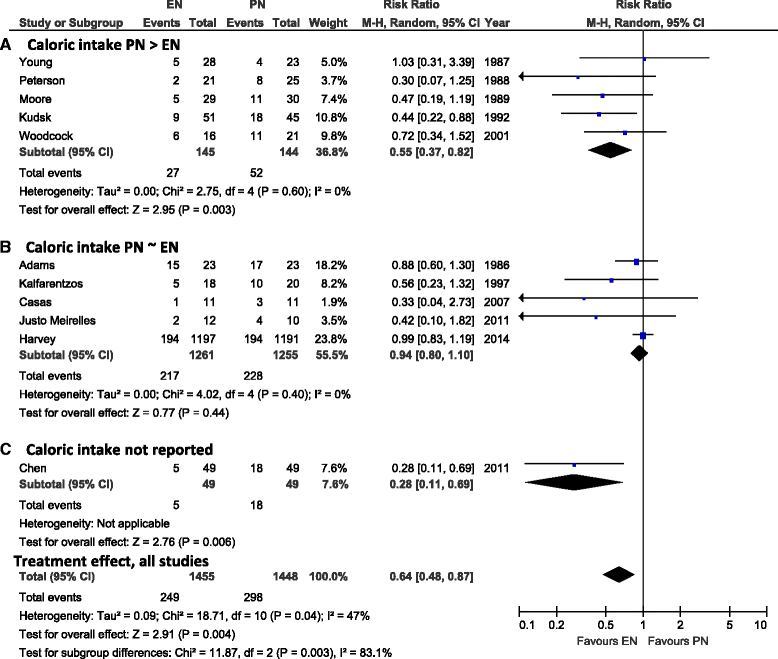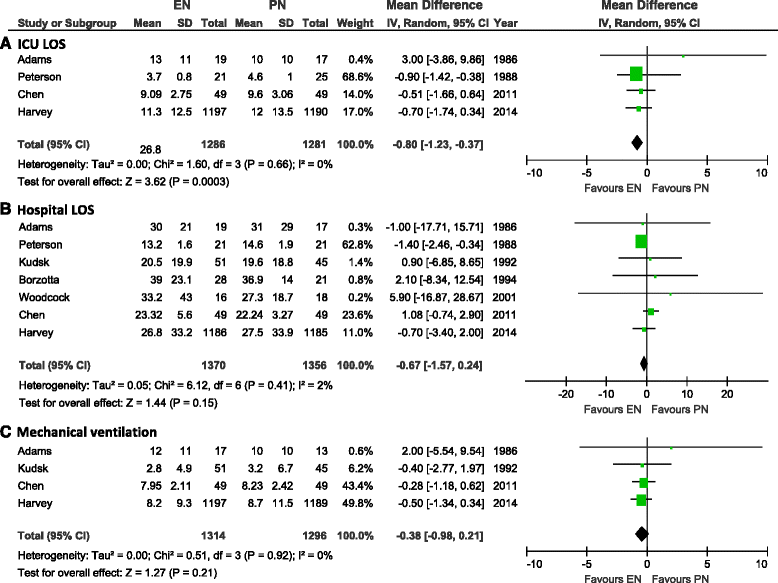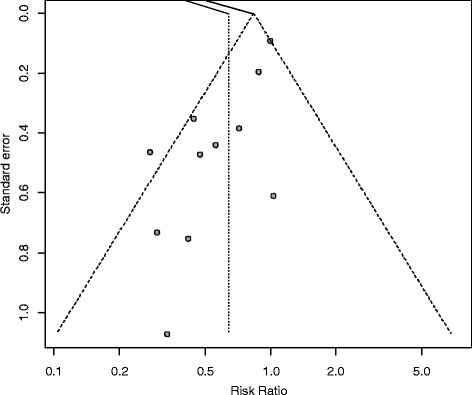Enteral versus parenteral nutrition in critically ill patients: an updated systematic review and meta-analysis of randomized controlled trials
- PMID: 27129307
- PMCID: PMC4851818
- DOI: 10.1186/s13054-016-1298-1
Enteral versus parenteral nutrition in critically ill patients: an updated systematic review and meta-analysis of randomized controlled trials
Abstract
Background: Enteral nutrition (EN) is recommended as the preferred route for early nutrition therapy in critically ill adults over parenteral nutrition (PN). A recent large randomized controlled trial (RCT) showed no outcome differences between the two routes. The objective of this systematic review was to evaluate the effect of the route of nutrition (EN versus PN) on clinical outcomes of critically ill patients.
Methods: An electronic search from 1980 to 2016 was performed identifying relevant RCTs. Individual trial data were abstracted and methodological quality of included trials scored independently by two reviewers. The primary outcome was overall mortality and secondary outcomes included infectious complications, length of stay (LOS) and mechanical ventilation. Subgroup analyses were performed to examine the treatment effect by dissimilar caloric intakes, year of publication and trial methodology. We performed a test of asymmetry to assess for the presence of publication bias.
Results: A total of 18 RCTs studying 3347 patients met inclusion criteria. Median methodological score was 7 (range, 2-12). No effect on overall mortality was found (1.04, 95 % CI 0.82, 1.33, P = 0.75, heterogeneity I(2) = 11 %). EN compared to PN was associated with a significant reduction in infectious complications (RR 0.64, 95 % CI 0.48, 0.87, P = 0.004, I(2) = 47 %). This was more pronounced in the subgroup of RCTs where the PN group received significantly more calories (RR 0.55, 95 % CI 0.37, 0.82, P = 0.003, I(2) = 0 %), while no effect was seen in trials where EN and PN groups had a similar caloric intake (RR 0.94, 95 % CI 0.80, 1.10, P = 0.44, I(2) = 0 %; test for subgroup differences, P = 0.003). Year of publication and methodological quality did not influence these findings; however, a publication bias may be present as the test of asymmetry was significant (P = 0.003). EN was associated with significant reduction in ICU LOS (weighted mean difference [WMD] -0.80, 95 % CI -1.23, -0.37, P = 0.0003, I(2) = 0 %) while no significant differences in hospital LOS and mechanical ventilation were observed.
Conclusions: In critically ill patients, the use of EN as compared to PN has no effect on overall mortality but decreases infectious complications and ICU LOS. This may be explained by the benefit of reduced macronutrient intake rather than the enteral route itself.
Keywords: Critically ill; Enteral nutrition; Infections; Intensive care unit; Meta-analysis; Nutrition therapy; Parenteral nutrition; Randomized controlled trial; Systematic review.
Figures




References
Publication types
MeSH terms
LinkOut - more resources
Full Text Sources
Other Literature Sources
Research Materials
Miscellaneous

